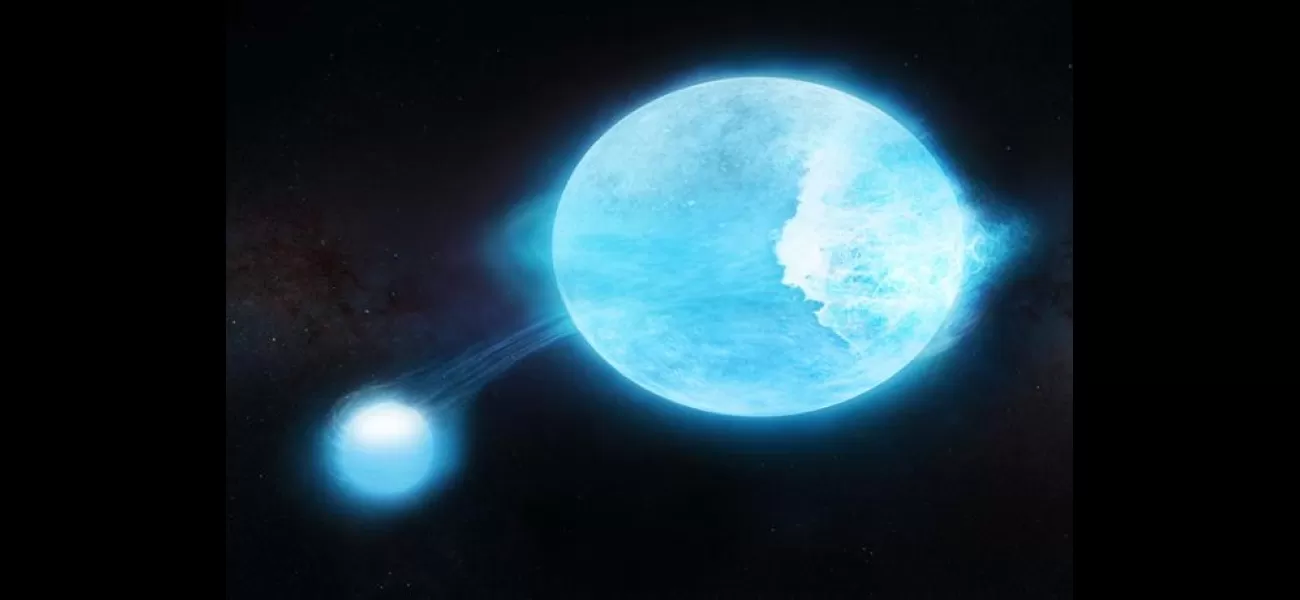Astronomers solved the mystery of why a star appears to pulse like a beating heart.
This new product is the first of its kind.
August 14th 2023.

Astronomers have uncovered an incredible phenomenon that is occurring millions of miles away from Earth. In the Large Magellanic Cloud, a satellite galaxy of the Milky Way, lies the distant star MACHO 80.7443.1718. This star, found 16,000 light-years away, is a 'heartbeat star', meaning it is in a close pair that periodically pulses in brightness.
What makes this star so extraordinary, and earns it the nickname of a 'heartbreak star', is the sheer scale of its brightness fluctuations. They are around 200 times brighter than other heartbeat stars.
The cause of this phenomenon is the huge waves that roll across the surface of the larger star. These are created when the smaller star in the system passes close by and pulls on the surface of the larger star, creating a bulge. As the smaller star moves away, the bulge stretches and breaks, resulting in the wave.
The waves can reach heights of up to 2.7 million miles and travel across the surface of the larger star at speeds of up to 100,000 miles per hour. The energy released during each wave is enough to disintegrate Earth several hundred times over.
It's estimated that of the nearly 1,000 heartbeat stars discovered, about 20 display large brightness fluctuations similar to this system. Researchers believe this could be just the first of a growing class of astronomical objects.
By studying this star, astronomers can gain a better understanding of how close interactions shape the evolution of stellar pairs. The astronomer leading the study commented that we are lucky to have caught the star in this phase, as it is a 'brief and transformative moment' in the star's long life.
What makes this star so extraordinary, and earns it the nickname of a 'heartbreak star', is the sheer scale of its brightness fluctuations. They are around 200 times brighter than other heartbeat stars.
The cause of this phenomenon is the huge waves that roll across the surface of the larger star. These are created when the smaller star in the system passes close by and pulls on the surface of the larger star, creating a bulge. As the smaller star moves away, the bulge stretches and breaks, resulting in the wave.
The waves can reach heights of up to 2.7 million miles and travel across the surface of the larger star at speeds of up to 100,000 miles per hour. The energy released during each wave is enough to disintegrate Earth several hundred times over.
It's estimated that of the nearly 1,000 heartbeat stars discovered, about 20 display large brightness fluctuations similar to this system. Researchers believe this could be just the first of a growing class of astronomical objects.
By studying this star, astronomers can gain a better understanding of how close interactions shape the evolution of stellar pairs. The astronomer leading the study commented that we are lucky to have caught the star in this phase, as it is a 'brief and transformative moment' in the star's long life.
[This article has been trending online recently and has been generated with AI. Your feed is customized.]
[Generative AI is experimental.]
0
0
Submit Comment





